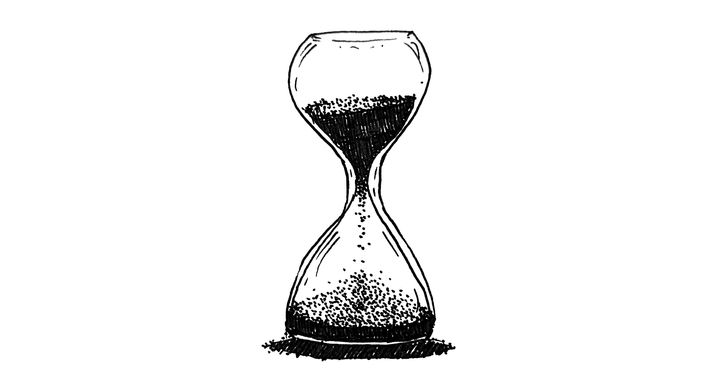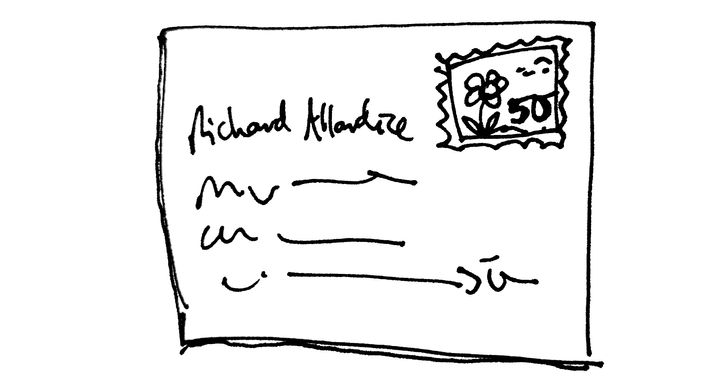Tetris your fortnight
You can get a lot done in the tiny gaps of any given day, if you’re strategic. Also: Failure IS an option.

Bonus for paying subscribers: A slightly fancy Google Sheet template with which to create your own schedule
Days are full of tiny opportunities
A successful and renowned writer friend of mine once wrote to me: “I marvel at how you manage to work fulltime, run around after chickens and children, and still write and record a podcast.”
Well, first up in response to this: I’m able to be this productive in my current endeavours because I’ve failed in others.
I have not achieved my goal of publishing a book of Sedaris-style essays. This is tough, but: it also means I am free of the commitments of a published author! I don’t have to devote time to going back and forth with a book editor, or giving public readings, or attending interviews. I need not devote time responding to a vast audience on social media, because… I don’t have one. (Anonymity saves time?)
In the immortal words of H. Jon Benjamin, perhaps best known as the voice of Archer: “Failure is an option.” (Italics mine. Sidenote: Benjamin’s memoir is hilarious.)

Secondly, and with slightly more seriousness: There is actually quite a lot of time in the day to get things done, even if you’re just using the gaps between other commitments – a full-time job, for instance.
To make best use of these gaps, I assign what I want to happen in each ahead of time – for an entire fortnight. The aim is to make any choice about what to do in these gaps redundant, because the choices have already been made. Choice in the moment is dangerous with little gaps of time, particularly when you can pick up a phone and waste half an hour scrolling through the inanities of social media.
This method has helped me banish that end-of-day question of “Where did all my time go?” Which is really another question in disguise: “Why didn’t my time produce the things I wanted?” My lackadaisical attitude towards the day’s structure made me feel that it had personally aggrieved me. The temerity of time!
👇 Read on for how to Tetris your fortnight to make the most of the gaps. 👾 (Or whatever your preferred timespan: week, month, whatever.)
The method
My gaps schedule
This is a snippet (full version follows) of my own fortnightly “gaps schedule”:

I chose to map out a fortnight (two weeks) because this lines up with my publishing goals:
- A newsletter every two weeks
- A podcast every two weeks
These deliverables fall on different weeks: every week I produce either the newsletter or the podcast. Importantly: The schedule should enable the completion of your goals. In my case these are publishing goals, but they can be anything, eg an exercise goal to run a certain total distance.
Each day is assigned a row. The row is divided by columns which roughly divide up the day, but don’t necessarily denote equal spans of time (each “Work” block, for example, is essentially four hours).
Each morning I check that day’s row to confirm what I’ll fit in that day. This is useful because:
- I don’t have to think about it, and I’m not inviting a choice (which might mean I meander or procrastinate)
- It helps ensure oft-neglected activities actually end up happening (eg exercising on days when I don’t actually have to physically turn up at the taekwondo club)
- Writing something down is not a huge level of commitment but it does increase the likelihood it will happen (it’s a commitment nonetheless)
The point of each column
Early morning: Generally the hours between 6am and 8am. I’m a morning person, plus most of my family gets up pretty late, so this is my golden productivity time. The timespan is about two hours and some days I try to use both hours (see Tuesday) – but most of the time I fit in one solid hour.
Morning: Loosely, 9am to 1pm (the missing hour = getting kids ready for school, breakfast, etc). Mostly taken up by my day job for weekdays, but I include items to squeeze in on a work break. Weekend days include blocks of a different kind, eg family or home-admin time.
Afternoon: Loosely, 1pm to 5pm. Similar story as per “Morning”.
Evening: I added this column to bed in an evening journalling habit: a commitment to myself to do it every day for 5-20 mins. I also do evening taekwondo classes, and recording them here helps map the overall “fullness” of any given day. “Scriv” refers to Scrivener, where I do all my writing.
Body admin: I originally added this as a joke, but I do actually try and stick to it. I have a dental hygienist appointment coming up, and when the inevitable “How often have you been flossing?” question comes up, I want to answer with a straight face – even if I omit the timeframe of “only for the last few weeks”. And “Rinse” refers to these sinus rinses I had to do after a persistent sinus infection. (In the beginning it feels a little like you’re drowning, but you get used to it.)
Fullness: The spreadsheet tallies the number of boxes I’ve added stuff to, and adds the count here. Max is 8. I’ll be the first to admit that there’s already quite a lot in my schedule. If you make your own, you might even just want to start with one item for the whole day. Days where the fullness count reads “8” will feel overwhelming. Counter this by (a) using fewer gaps; or (b) making some (all?) of those gaps “relaxing” activities, like “lie in the sun and look at the clouds”.
Create your own
Whether you take the basic principles above and create your own gaps schedule, or download the template provided, remember:
The point of having a schedule like this is to feel good about the progress you make on any given day.
It actually doesn’t matter in the beginning how much progress – only that you have some kind of plan (like this one) to build your progress incrementally.
And that you look at the plan.
And that you don’t worry too much about the days where you achieve exactly nothing. That’s just motivational fuel for future days. Don’t be too hard on yourself.
Also: These gaps are not only for doing “productive” things.
They are also for social time, reading, contemplating, gaming, meditating – anything that’s important to your happiness but is getting lost in the relentless momentum of the day. For example: I’ve added two blocks of family time on Sunday (see below) not because I need a reminder to spend time with my family – but because we have a family goal of spending every Sunday morning doing something together as a family. I also have gaps in the week for “coffee” (with my wife) and “date” (also with my wife).

It might seem a bit formal and strict to have a schedule like this, which is a fair criticism. It doesn’t invite spontaneity. But we’re a pretty busy household, and this has helped not only me to progress my own publishing goals, but also to make sure we’re not a family of ships passing in the night. 🚣 🚣 🚣 🚣
Good luck!
If you get those running shoes on and you’re out the door before you’ve convinced yourself otherwise: you’re winning.
Ideally it’s: “It’s 10, so now I’m off on my run.”
Not: “It’s 10, and I have 30 minutes, I wonder what I should do? Maybe a run?”
One of these is far more likely to achieve a run than the other.
Some final notes:
- Modify this method to whatever suits you – you need not structure it the same way I have.
- I achieve some items more regularly than others. I often miss the Headspace mindfulness sessions, for example. And that’s okay, because sometimes I do get them in there, which is better than nothing. But it also probably means I either need to assign it more importance – or stop pretending I’ll fit it in and cut it.
- I regularly revise the schedule to adjust for things I want to do more or less of, or where I’ve been overambitious with what I might achieve.
Use the slightly fancy Google Sheet template
Paying subscribers can copy and use this slightly fancy Google Sheet template, which you can populate with your own hopes/dreams for the gaps in your day.
If you’re not a paying subscriber, sign up for full access to all templates for practical posts like this one, plus exclusive essays.




Comments ()